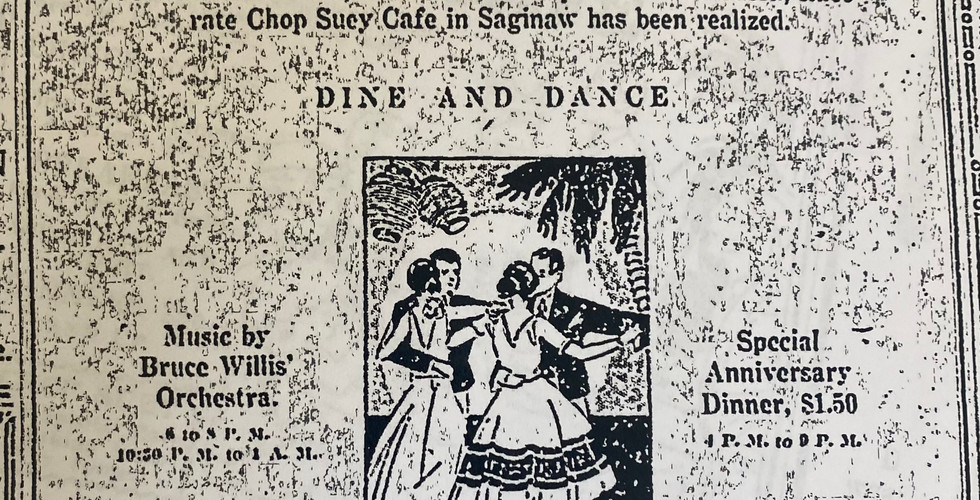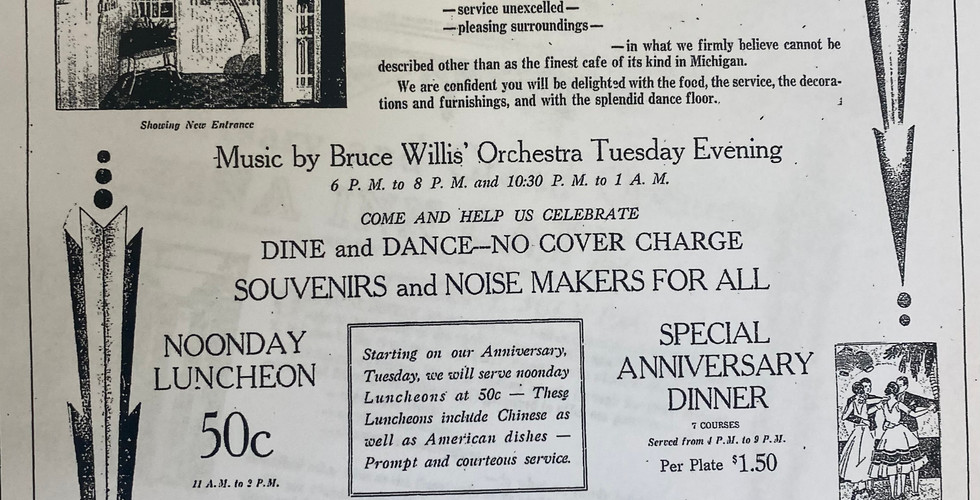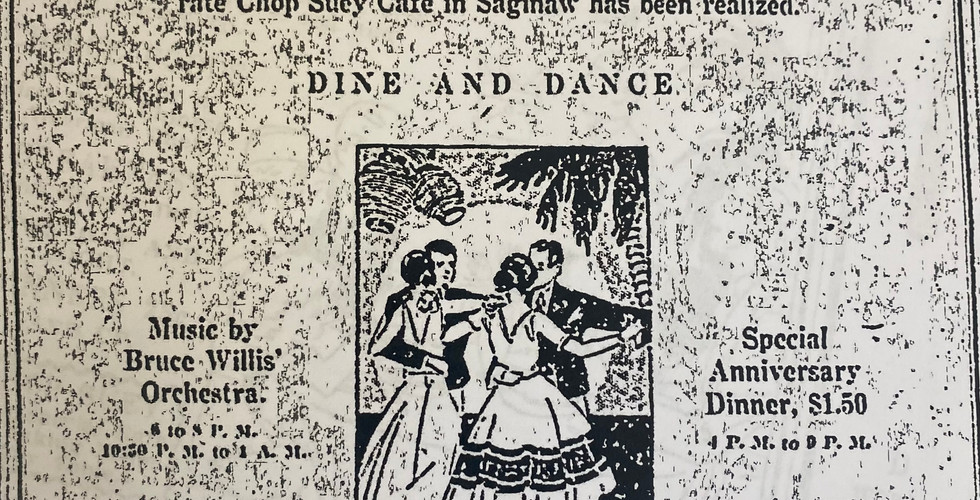The Father of Tiki
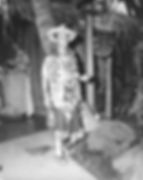
Tiki culture began in the 1930s, led by the “Father of Tiki” Donn the Beachcomber (later abbreviated to Donn Beach). He was born Ernest Raymond Gantt, and after traveling the South Pacific, Gantt settled in Hollywood, California, where he opened his bar, Don’s Beachcomber, in 1933, just after the end of Prohibition. The bar was said to be a place to get away from life’s realities. Tiki meant a tropical mish-mash of Polynesian, Hawaiian,

and Caribbean decor, foods, and drinks. Donn’s successes (and his business-minded wife Cora Irene "Sunny" Sund) led to his own chain of bars and restaurants. You can read through his extensive rum drink list on an original 1940s menu here.
Trader Vic

Victor Bergeron got into the restaurant business in Oakland, California, in the 1930s with Hinky Dinks, a burger and beer joint. Travels and even a trip to visit Don's Beachcomber inspired him to rebrand his bar as a tiki bar and give it a new name. His wife suggested Trader Vic’s because he was already known to trade his wares for items to add to his collection. He began to change his menu to incorporate some Cantonese-inspired foods, and he featured rum-based cocktails.
Like all good cocktail stories, it seems the need to entertain guests prompted the invention of the Mai Tai. In 1944, Bergeron’s friends Ham and Carrie Guild were visiting Oakland from Tahiti, and he wanted to make them a special drink.
He used a 17-year aged rum from Jamaica (J. Wray & Nephew) – the drink’s popularity would eventually help deplete the world’s supply of this particular rum – and added a Martinique Rhum. Upon first taste, Carrie Guild exclaimed, “Maita’i roa a’e” which translates to “Out of this world - the best!” and that is how the Mai Tai got its name.

Donn Beach also named a drink Mai Tai, and for a while there was competition between the two. However, a trademark dispute went to the courts in the 1970s, where thanks to affidavits from the Guilds, it was settled in favor of Trader Vic as the originator. That hasn’t stopped people from mixing various concoctions of rum and juice and calling it a Mai Tai. Trader Vic never kept the recipe a secret though. He had to switch up the rums due to availability, but he did give away the recipe to anyone who asked. This is the original recipe.

Let's Drink!--MAI TAI
INGREDIENTS 30ml (1 oz) Jamaican Rum (aged)*
30ml (1 oz) Martinique Rum*
1 Lime (fresh and cut in half) 15ml (½ oz) Orange Curaçao (can sub Grand Marnier) 7.5ml (¼ oz)Orgeat Syrup 7.5ml (¼ oz) Rock Candy Syrup (rich simple syrup, 2:1 ratio of sugar to water)


METHOD – Chill a double rocks glass or Mai Tai specifically designed glass and fill with crushed or shaved ice. Squeeze the lime juice over the ice and keep one-half shell for garnish. Add into the glass orgeat syrup, rock candy syrup (super saturated sugar version of simple syrup), orange curaçao, and aged (ideally over 10-years) Jamaican gold rum and Martinique molasses rum. Shake gently in the glass. Decorate (garnish) with the half-lime-shell, fresh mint and a fruit stick.
Bergeron first worked with Western Hotels to open chains of Trader Vic’s, including the one in Hawaii where the (possibly unfortunate) addition of pineapple juice first transpired. The idea was that pineapple juice would appeal to tourists. As the chain grew, the original location in Oakland closed and a waterfront location opened in nearby Emeryville. This is now considered the flagship. Later, Bergeron would partner with Conrad Hilton, much like our friend from two weeks ago, Bartender Joe, to open new bars in Hilton’s around the world. By the 1970s, tiki lost appeal and several of the bars closed by the end of the 1990s. However, there has been enough revival that Trader Vic’s lives on.

In search of Saginaw’s Early Chinese Restaurants
While we are at a loss for a decent Mai Tai in Saginaw, we instead focused on the Chinese food connection to Tiki culture—and took a deep dive into Saginaw’s early Chinese food scene.
“Charles Lum, 83, one of the oldest of the Chinese colony here, who died Sunday night at St. Mary’s Hospital, will be returned to his native Hong Kon for burial. His home was at 529 Millard. Mr. Lum was one of the founders of what now is the Canton Cafe operated by some of his kin. It formerly was China Inn Cafe in the 300 block Genesee, above the present Bazley Market and adjoining store.”
-The Saginaw News, March 18, 1963.
The Canton Cafe opened on September 20, 1934. Located on South Franklin Street, it was centrally located and convenient to numerous theaters. It was a perfect meeting and dining spot for beginning a night “on the town.”
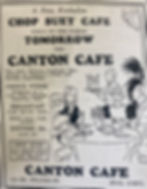
The Canton Cafe traced its roots back to the China Inn Cafe at 317 ½ Genesee. – the half denotes it was located on the second floor above the street-level stores. Opened about 1908 by members of the Lum family, the restaurant’s prominent sign simply and decisively indicated what was served: “Chop Suey, Steaks and Chops.” The China Inn Cafe menu included chop suey and a wide range of Western dishes – including Sunday chicken dinners. Newspaper articles hint that more traditional Chinese dishes were served – especially on special occasions.

Advertising in Saginaw papers indicates that in the first years of the early twentieth century, at least two hotels featured Chinese or Chinese-inspired food in their dining rooms. However, the China Inn Cafe was almost certainly the first Chinese restaurant in Saginaw to last and thrive. In celebration of its twentieth year of operation, the owners had it remodeled – the work included a new dance floor. An article in the Saginaw News describes the anniversary celebration.

On July 11, 1928., the paper reported:
“China Inn, 20 Years Old, In Celebration”
“The China Inn Café, 317 Genesee avenue, newly remodeled and redecorated in honor of its twentieth anniversary, was reopened to the public at a dinner Tuesday evening at which Arthur Lum, proprietor of the establishment, entertained a number of his friends.
The cafe has been strikingly decorated in the Chinese manner and was highly praised by those who saw it on the opening night.”
-- The Saginaw Evening News, July 11, 1928.
In 1934, China Inn Cafe was reopened under name of Pagoda Royale. Advertising noted that it was managed by Arthur Lum, and he had served Saginaw for 26 years. However, only a few days earlier the Canton Café opened at 119 South Franklin. Advertising and city directories suggest it was operated by other members of the Lum family who had formerly been associated with the China Inn Cafe. The Pagoda Royale closed permanently after a few years, but in 1939, the Canton Cafe closed for remodeling and reopened later that same year. It would be an anchor on South Franklin Street until it closed about 1976.
Later this year, during the holiday season, we promise to continue this story. However, we need to make our own Mai Tai – one thing that does not appear to have been available at either the China Inn Cafe or Canton Cafe.
Sources:
“052-Mai Tai,” https://lock-tails.com/2021/10/06/052-mai-tai/
And a Bottle of Rum: A History of the New World in Ten Cocktails by Wayne Curtis


